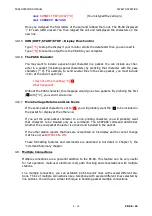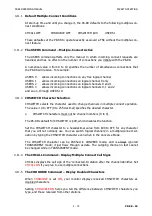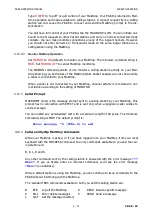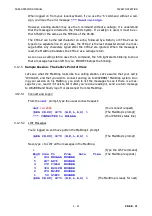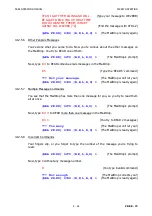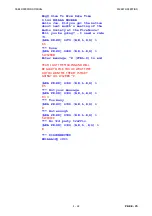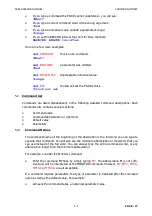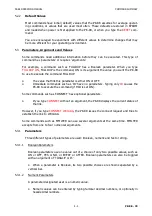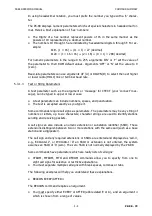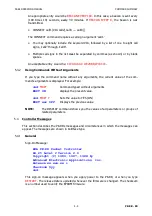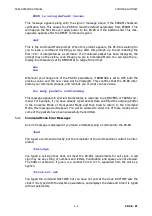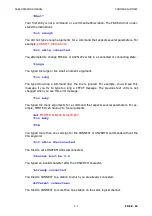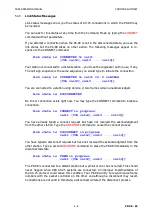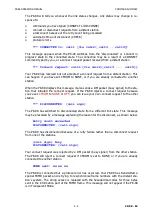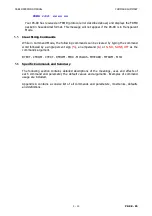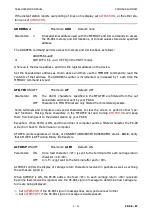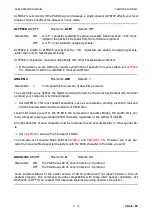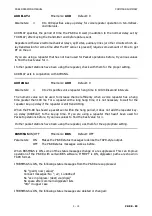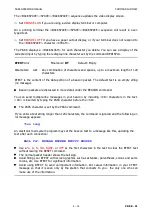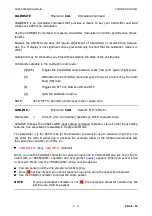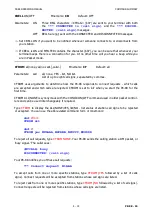
PK-88 OPERATING MANUAL
COMMAND SUMMARY
5 - 4
PK-88 - 79
In using hexadecimal notation, you must prefix the number you type with a '$' charac-
ter.
The PK-88 displays numeric parameters which set special characters in hexadecimal for-
mat. Here's a brief explanation of 'hex' numbers:
o
The 'digits' of a hex number represent powers of 16 in the same manner as the
powers of 10 represented by a decimal number.
o
The numbers 10 through 15 are indicated by hexadecimal digits A through F. For ex-
ample:
$1B - (1 × 16) + (11 × 1) = 27 (decimal)
$120 = (1 × 16 × 16) + (2 × 16) + (0 × 1) = 288 (decimal)
For numeric parameters in the range 0 to 255, arguments 'ON' or 'Y' set the value of
the parameter to their ROM default values. Arguments 'OFF' or 'N' set the value to 0
(zero).
Baud-rate parameters can use arguments UP (U) or DOWN (D) to select the next higher
or lower radio (HDLC) link or terminal baud rate.
5.3.1.3
Text or String Parameters
A text parameter such as the argument or 'message' for CTEXT (your 'connect' mes-
sage), can be typed in upper or lower case.
o
A text parameter can include numbers, spaces, and punctuation.
o
The text is accepted exactly as you type it.
Some commands require call signs as parameters. The parameters may be any string of
numbers or letters, up to six characters; character strings are used to identify stations
sending and receiving packets.
A call sign can also include a numeric extension or substation identifier (SSID). These
extensions distinguish between two or more stations with the same call (such as a base
station and a digipeater).
The call sign and any required extensions or SSIDs are entered and displayed as 'call-n',
e.g., 'KX1AAA-12', or 'WX1AAA-1'. If an SSID or extension is not entered, the system
assumes an SSID of '0' (zero). The zero SSID is not normally displayed by the PK-88.
Some commands have parameters which are really lists of call signs:
o
CFROM, MFROM, MTO and DFROM commands allow you to specify from one to
eight call signs for selective or restrictive operations.
o
You must separate multiple call signs with blank spaces, commas or tabs.
The following examples will help you understand these explanations.
o
BEACON EVERY|AFTER
n
The BEACON command requires an argument.
o
You must specify either EVERY or AFTER (abbreviated E or A), and an argument
n
which is chosen from a range of values.
Содержание PK-88
Страница 1: ......
Страница 154: ...PK 88 OPERATING MANUAL APPENDIX D D 1 PK 88 154 APPENDIX D SCHEMATIC and PARTS PICTORIAL...
Страница 155: ...PK 88 OPERATING MANUAL APPENDIX D D 2 PK 88 155...

